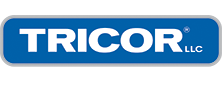
Understanding your homeowners insurance is important—it’s one of the biggest investments you’ll make throughout your life. Understanding your options on the types of coverage options you have for homeowners insurance will help you make informed decisions.
Let’s break down the difference between actual cash value and replacement cost options. Coverage options you choose are uniquely based on your tolerance to risk and your overall financial well-being.
- Actual cash value is what your home is valued at in today’s market. Actual cash value takes into account any depreciation into account.
- Here’s an example of how actual cash value would work:
- If you have purchased an older home built in the 70’s, and you unfortunately had a fire your electrical system would be covered at the depreciated value of that system. When you go to rebuild you will be required to upgrade your electrical to today’s code. You will need to cover the difference in cost out-of-pocket if you had actual cash value.
- Replacement cost is what you would pay for the item at today’s market cost.
- If you had replacement cost coverage you typically will be able to rebuild for the same kind (or like kind), quantity and quality up to the coverage limits you chose on your policy.
- Here’s an example of how actual cash value would work:
Now that you know about the difference in actual cash value and replacement cost, let’s talk about coinsurance clauses.
The coinsurance clause is not unique. This is a fairly typical clause when you choose the replacement cost option for coverage.
How does the clause work?
Typically you want to carry enough coverage in your homeowners policy to cover 80% or more of the replacement cost of your home. Insurance carriers can’t require you to insure your home at 100% of replacement cost. That’s why choosing what you insure your home for is so important, you could be left paying a lot of out-of-pocket expenses.
Let’s walk through an example
Current market rebuilding value: $200,000
You insured your home for: $150,000
Fire damage caused: $50,000
Coinsurance clause: 80%
Amount payable for the claim would be (less any deductible): $37,500
Your claim payout received a penalty for being under-insured
Because you underinsured your home, you insurance carrier will use the coinsurance clause and apply a penalty on this claim for payout. Here an example of how they may apply the penalty.
$150,000/$200,000 = 75%
This percentage is what you insured your home for against the value, meaning your left 25% of your home not insured.
In your $50,000 claim they will reduce the payout by 25%. A coinsurance penalty is applied and you would receive $37,500 towards your $50,000 worth of damage.
As you can see in our current volatile housing market, understanding and choosing the right coverage types and limits is extremely important. Our agents will work with you and choose the right cadence such as annual insurance reviews, or bi-annual. Everyone’s risk tolerance is different, and we’re here to help you keep pace with your changing needs.

